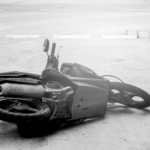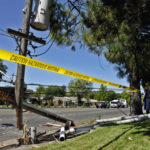What is Vehicular Manslaughter?

A range of criminal offences may apply in situations where a driver causes the death of another person.
Manslaughter is one of them, but is usually reserved for the most serious dangerous driving cases.
The more common charges are dangerous driving occasioning death. Here we explain the difference.
Manslaughter comprises both voluntary manslaughter and involuntary manslaughter.
Voluntary Manslaughter
Voluntary manslaughter occurs if the offender caused death to another person as a result of an unlawful and dangerous act. It usually involves a deliberate action, but it may not have been premeditated or planned out in advance.
This is common in situations where a person was killed in circumstances of provocation, excessive self-defence, or where the person who committed the act was ‘substantially impaired by abnormality of the mind’.
Involuntary Manslaughter
Involuntary manslaughter is also known as manslaughter by unlawful and dangerous act or conduct.
To establish the offence of involuntary manslaughter, the prosecution must prove beyond reasonable doubt that:
- You performed an act that caused the death of another person,
- That conduct was the substantial contributor to the death,
- You intended to commit the act,
- The act was unlawful, and
- The unlawful act was dangerous because a reasonable person would have been aware that committing the act would expose another person to risk of serious injury in the circumstances at the time.
One of the most common examples of involuntary manslaughter is texting while driving, resulting in the death of a pedestrian.
Criminal Negligence and Manslaughter
To establish the offence of manslaughter by criminal negligence, the prosecution must prove beyond reasonable doubt that:
- You owed a legal duty of care to another person. This duty must be one legally recognised i.e. parent/child, patient/doctor, employer/employee, or a circumstance you assume a duty of care upon another person,
- You committed a voluntary act or omission which caused the other person’s death where that death was substantially caused or accelerated by your act/omission, and
- Your act or omission breached the duty of care in one or more of the following ways:
(a) You failed to exercise the standard of care that a reasonable person would have exercised in those circumstances at the time; or your act was one that a reasonable person wouldn’t have done in those circumstances at the time, and
(b) Your act or failure to act resulted in criminal negligence meriting criminal punishment for manslaughter because:
(i) It fell so far under the standard of care that a reasonable person would have exercised in those circumstances; and
(ii) It was such that death or serious bodily harm was a likely consequence.
Vehicular Manslaughter
A person who drives a motor vehicle in a dangerous and criminally negligent way and causes the death of another person can face a manslaughter charge.
As outlined above, criminal negligence means more than a mere failure to take reasonable care. It means a high degree of carelessness or recklessness showing a disregard for the life and safety of others.
Manslaughter charges arising from the driving accidents are usually reserved for the worst categories of driving.
In many other cases, the appropriate charge may by dangerous driving occasioning death or the less serious negligent driving occasioning death.
Dangerous Driving Occasioning Death
Dangerous driving occasioning death is an offence under section 52A of the NSW Crimes Act 1900 (NSW) which carries a maximum penalty of ten years imprisonment.
To establish the offence, the prosecution must prove beyond reasonable doubt that:
- You were the driver of a motor vehicle,
- You were involved in an impact causing the death of another person, and
- You were under the influence of alcohol or a drug, or you were driving at a dangerous speed, or you were driving in a dangerous manner.
A ‘vehicle’ is defined as any motor car, motor carriage, motor cycle, or any other vehicle propelled, wholly or partly, by volatile spirit, steam, gas, oil, electricity, or by any other means other than human or animal power, or a horse-drawn vehicle
An ‘impact’ is that which occurs:
- Between an object or a person and the vehicle,
- Between an object, including the ground, due to being thrown from the vehicle,
- With another vehicle or object in, on or near a person
- With anything on or attached to the vehicle, or
- With anything in motion through falling from the vehicle.
It also includes where:
- A vehicle overturns or leaves the road, or
- A person falls or is thrown or ejected from the vehicle.
The maximum penalty increases to 14 years in prison where the offence is committed in ‘circumstances of aggravation’ which is where:
- You had a ‘prescribed concentration of alcohol’ in your bloodstream,
- You exceeded the speed limit by more than 45 km/h, or
- You were ‘very substantially impaired’ by a drug or drugs.
A ‘prescribed concentration of alcohol’ is a reading of at least 0.15.
You are presumed to have been under the influence of alcohol where you had the prescribed concentration of alcohol in your bloodstream.
A certificate of your alcohol or drug concentration is admissible as evidence as long as the analysis occurred within 2 hours after the impact, unless you are able to prove ‘on the balance of probabilities’ that the concentration was lower at the time impact.
A defence to the charge is that the death was not attributable in any way to:
- Being under the influence of alcohol or drugs,
- The speed at which you drove, or
- The manner in which you drove.
Negligent Driving Occasioning Death
Negligent Driving Occasioning Death is an offence under Section 117(1)(a) of the Road Transport Act 2013.
To establish the offence, the prosecution must prove beyond reasonable doubt that:
- You drove a motor vehicle,
- You drove the vehicle negligently, and
- You caused death to another as a result.
You drove ‘negligently’ if you “departed from the standard of care for other users of the road to be expected of the ordinary prudent driver in the circumstances”.
When determining whether the offence has been committed the court must consider:
- The nature, condition and use of the road at the time,
- The amount of traffic on the road at the time, or which might reasonably be expected on the road at that time, and
- Any obstructions or hazards on the road at the time.
Examples of negligent driving may include:
- Causing an accident by failing to keep a proper lookout for others,
- Allowing a collision to occur by not driving defensively to avoid it, and
- Endangering others by not paying due care and attention to road rules or conditions.
Examples that may not amount to negligent driving include:
- Where an accident was inevitable or unavoidable,
- Where a previously unknown mechanical defect caused a collision, and
- Where you became unconscious due to a condition you were not previously aware of.
If it is your first major traffic offence in the past 5 years the maximum penalty is:
- 18 months in prison,
- A 3 year ‘automatic’ licence disqualification, which the court can reduce to 12 months, and
- A fine of $3,300.
If it is your second or more major traffic offence in the past 5 years the maximum penalty is:
- 2 years in prison,
- A 5 year automatic licence disqualification, which the court can reduce to 2 years, and
- A fine of $5,500.
Going to court for a traffic offence?
If you are going to court for a traffic offence, call or email Sydney Criminal Lawyers anytime to arrange a free first consultation with an experienced, specialist traffic lawyer who will accurately advise you of your options, the best way forward, and fight for the optimal outcome in your specific situation.








